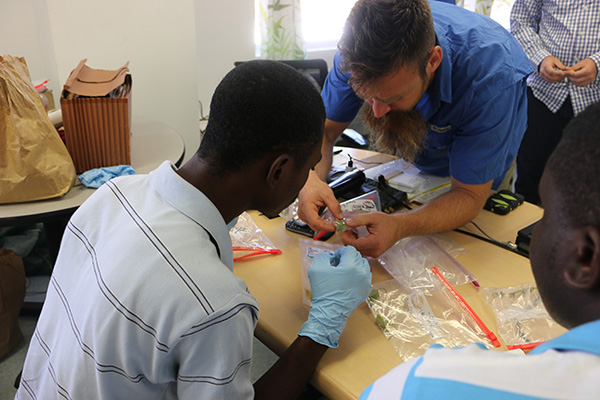Researching 1,500 peanuts, one variety at a time
By Allison Floyd
Growing America
In the late 1990s, tomato spotted wilt virus took a bite out of peanuts in the Southeast, claiming half of some farmers’ crop and about 10% of the overall yield in 1997.
One of the most important factors in the battle against TSWV was lurking in a peanut variety from South America, which had natural resistance to the virus.
“We were seeing 30 to 40 percent reductions in yield,” said Greg MacDonald, a weed scientist and agronomist who is working to evaluate and chronicle the traits of hundreds of varieties of peanuts stored by the U.S. Department of Agriculture. “Most all the runners now can be traced back to that one line, which is one of the reasons we maintain the collection."
The work to chronicle the traits of different varieties of peanuts continues today at the University of Florida’s Plant Science Research and Education Unit in Citra, about 30 minutes south of the main campus in Gainesville.
Around 1,500 varieties of peanuts have been grown there over the past three years as part of the USDA’s germplasm network.
“Nobody had done a side-by-side study of yield, grade, biochemical components and genetic background of these peanut varieties,” said MacDonald, who researches and teaches for UF’s Institute of Food and Agricultural Sciences, which oversees the project. “We put together this study and we’re now able to determine those things for each plant line.”
The research is winding down after three years, but the findings will help peanut breeders from around the world for years to come.
The work also has helped to maintain the seed collection of different cultivars by regenerating some of the 10,000 different varieties stored in Griffin, Ga. Different types of seeds have different shelf life, but because of the high oil content in peanuts, experts think it’s best to regenerate the peanut seed every decade.

“The work Dr. MacDonald and his associates are doing at the Plant Science Research and Education Center in Citra is extremely valuable to the peanut industry here in Florida, in the nation and, really, around the world,” said Ken Barton, president of the Florida Peanut Producers Association. “To maintain the germplasm collection is extremely important work.”
Like the TSWV battle of the 1990s, MacDonald is fighting aflatoxin today, discouraging the mold that produces the poisonous compound.
For growers and peanut researchers, MacDonald’s work is invaluable. This research is a joint effort between UF/IFAS agronomy and the USDA’s Agricultural Research Service, involving Noelle Barkley and Corley Holbrook, along with Barry Tillman, a UF/IFAS agronomy associate professor. Support for the research has been provided by The Peanut Foundation, the Georgia Peanut Commission and the Florida Peanut Producers Association.
The benefits aren’t limited to the Southeast, but could help growers across the globe. In parched African countries, for example, growers need to know which varieties can survive and make a harvestable crop with only a few inches of rain all season.
MacDonald and his team have worked with farmers in Haiti as part of the Feed the Future Peanut & Mycotoxin Innovation Lab, supported by the U.S. Agency for International Development (USAID). The project works with an organization called Meds & Food For Kids, which uses locally grown peanuts to produce ready to use therapeutic food (RUTFs), a fortified peanut paste that’s been formulated to provide all of a child’s basic nutritional needs. It comes in a plastic packet and can be squeezed directly into a starving child’s mouth.
“The ready-to-use therapeutic food is shown to reverse the effects of malnourishment in a short amount of time,” said MacDonald, who spent part of his summer in Haiti, the poorest country in the Western Hemisphere.
Published July 14, 2015
